Chapters
The Social Age
Our digital era is in full flow and everything from socialising to selling and building relationships is done from screen to screen. No surprise, then, that there are trust issues when it comes to the corporate world. A lack of true human interaction is perhaps what drives consumers to feel the need for authenticity when they are considering buying a product or service.
It is for this reason that corporations need to get social. We’re not just talking about social media advertising or having a profile on LinkedIn. For a company to truly be social, there needs to be a culture shift from top to bottom in terms of strategising, marketing, delivering and hiring.
Social Businesses And Credibility
We know that the buyer journey has changed. As global public trust in top executives is at an all-time low of just 37%, content shared online by employees leads to eight times higher engagement and 25 times more re-shares. According to Forbes, after watching a video on social media, an impressive 64% of users are more likely to buy a product online.
It’s clear, therefore, that there’s a need for increased buy-in of social business at the C-suite level. Currently, less than 10% of executive leaders in Asia Pacific are active on social media, despite the fact that companies with active leaders are perceived 23% more positively than those with inactive leaders.
In fact, a social C-suite could be the solution to several business woes because executive social media engagement results in higher brand recognition, higher levels of employee engagement and performance and, perhaps most importantly, an increase in public trust.
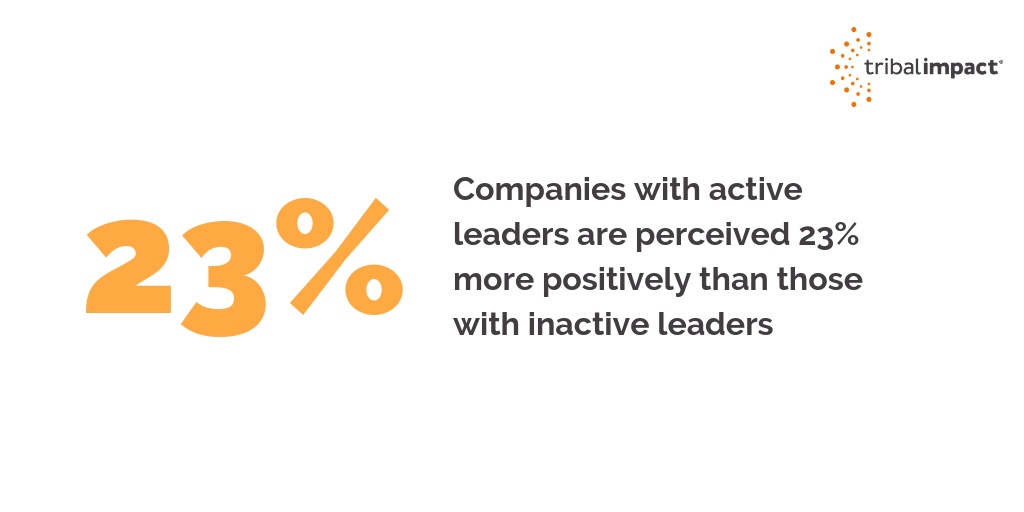
What Does Becoming A Social Leader Entail?
Firstly, it means accepting the disruption and discomfort of our social age. The shifts in technology and methods of communication have dramatically altered the expectations held by business leaders.
Below is an extract from 'The Social CEO: How Social Media Can Make You A Stronger Leader' by Damian Corbet - Tribal Impact's CEO, Sarah Goodall wrote the opening chapter.
Here are the fundamental changes that have led to these new expectations:
- From IT as a department to a fundamental foundation: changing technology is changing business rules of operation. Business Communications are no longer time-bound; working communities are no longer geography-bound.
Perhaps the biggest issue for organisations is that they are no longer in control of the “network” they operate through. Social media removes the safety net of controlling the brand news. - From formal frameworks to collective communities: the hierarchical cascade of information within an organisation is now consigned to history. Modern leaders are equipped to send whatever message they want, when they want, to whomever they want.
Feedback is also forthcoming, in its rawest format. Perhaps this presents a scary scenario to some. But it also opens the door for leaders to act with transparency and authenticity.
Digital leaders can become influential both inside and outside of their organisations. In fact, some 73% of employees search to see what their CEOs are saying on social media. - From ‘knowledge is power’ to lifelong learning: the social age has changed our relationship with learning. Technology makes accessing information and communicating with other remote communities easy.
It’s the responsibility of the social CEO to build high-performing teams and unlock the digital potential within their organisation. - From listening to living brand values: never has there been such a spotlight on walking the talk. Anything other than ethically sound and moral cultures is likely to be exposed through the raw and unfiltered channel of social media.
Employees look to leadership as an example of what is achievable and expected. - From command and control to trusted authenticity: Trusted authenticity is critical to social leadership. Fake news has taught us to question authority and so we consult our own trusted networks when we need to make decisions.
For trusted authenticity to truly work, the social leader needs to empower their internal community to advocate on behalf of the brand. Understanding individual purpose, telling stories and listening to others will differentiate the social CEO.

Recent findings suggest a social C-suite is an asset. We know that we are working within a trust economy where leadership is no longer synonymous with authenticity. People don’t believe logos. They want a human-led approach.
When it comes to the social executive, the Global Social CEO Survey, from Brandfog, reported that 75% of respondents consider social CEOs to be better leaders. In fact, the entire C-suite will improve their public perception by being active on social media.
And that’s because social businesses are proven to achieve better results in terms of sales, more quickly than those who rely on more traditional methods of customer engagement. In fact, the same report showed that 55% of respondents believe that social CEOs positively influence purchase intent.
This thought leadership and influencer status is where your leadership team should be aiming. To back this up, Brandfog’s statistics show that 70% of respondents say executive engagement on social media leads to brand trust.
- They can drive innovation by listening to what people are asking for, are needing, or what annoys them. They can gather information about what requires fixing. All these activities will remove friction from the business and show the leadership as being aligned with the corporate values, truly putting the customer first.
- They can use social platforms to strengthen employee engagement too. By sharing stories and showing their human side, they can engage existing employees as well as showcase the business’ culture for potential future hires.
- They can show they are living the brand values. A poster proclaiming you are trustworthy, transparent and team-oriented no longer cuts it.
Proof is needed and what better way than to show examples of how the values are alive and thriving throughout the organisation on your real-time social media feed.
- They can drive true competitive differentiation. Becoming an authentic social leader is not a quick or easy feat. Many leaders will not adapt their style.
But every leader that does will champion connectivity within and outside of their organisation. It’s not a nice to have. A social C-suite is now essential for business growth.
According to Hootsuite, nearly 70 per cent of executives still believe it’s risky to participate on social media. Perceived risks centre around compliance, confidentiality and the close inspection of working practices that comes from raising the brand profile.
Fears often grow out of a lack of knowledge so it’s critical to give your C-suite time to get to grips with what a social culture looks like and can achieve. Here are Tribal Impact’s 5 top tips for getting your C-Suite settled with social:
1. Support them with content and start small: Tribal Impact’s Coffee Cup Routine is a great habit-forming ritual which makes social activity feel like a natural part of the working day.
2. If they quite simply don’t know how to use social media, something that’s very common at the C-suite level, give them the chance to take in just the information they need to know. They only need to focus on the elements their role needs. Again, providing a range of appropriate content can get them over the first hurdle which is often a lack of inspiration.
3. If they are traumatised by transparency, reassure them with a clear set of guidelines. A business should never be social without a policy which sets out boundaries and helps people to make the right decisions when sharing content.
Clear guidelines on when to engage and when to ignore are also important at the executive level as they may be asked to comment on a wider issue which may not benefit the brand.
If you operate within a closely governed industry, such as the financial services industry, make sure the relevant additional red tape is covered in your policy e.g. financial promotions.
4. Reassure them that this isn’t meant to be a quick win. Becoming a social business is a huge cultural shift and it needs to happen gradually. As they take small steps towards advocacy and thought leadership, the results will speak for themselves. Make sure relevant performance metrics are captured and presented back regularly.
5. A lack of direction in terms of content can be a massive stumbling block. Without a clear social strategy, you might not see such clarity of results. Understanding your executive's angle and purpose online is key and your leadership team may need some third-party guidance here.
Someone who is…
- Actively participating on social media. Regularly visible; using different types of content and contributing to conversations
- Sharing content that inspires them. Their feed needs to show their own personality and involvement otherwise it will quickly be perceived as an automated mouthpiece for the brand and be subject to the trust issues that come with that perception
- Writing content that speaks to their values and passions. This comes down to building an authentic and human profile but it also means their posts don’t always have to be work-related. Some lifestyle, family or general opinion pieces will go a long way to creating an engaging social leader (but don’t forget to steer clear of the usual hot spots like politics and religion)
- Engaging with others. Social media channels are two-way and it’s important to influence the debate as well as start it off. To be considered an expert in their field, the social C-suite needs to be present when it matters. They should be championing their opinions, using their experience to lead and influence opinion and doing so as often as possible
- Networking. No longer just a face-to-face activity, building and nurturing digital relationships is just as important as the physical act of networking. This type of social media presence provides an insight into the human behind the executive and almost always evolves into a lasting business relationship
- Listening. Social selling is often in the spotlight but social listening is equally, if not more, important. Your social CEO cannot become an influencer if they aren’t aware of the issues which are relevant to their own organisation or trending more widely
Research shows that, in 2016, only 40% of Fortune 500 CEOs were active on at least one of six major social networks. The report by CEO.com goes on to say that of the Fortune 500 CEOs that were included in the research, 69 were active on more than one channel and just 15 were active on more than two.
It’s clear, then, this is far from a crowded space. Any benefits of social leadership are there for the taking. Emerging social C-suites are pioneers, not followers.
We’ve already discussed the benefits in terms of perception, trust and authenticity and their importance in today’s business world. But there are a host of related benefits too, including:
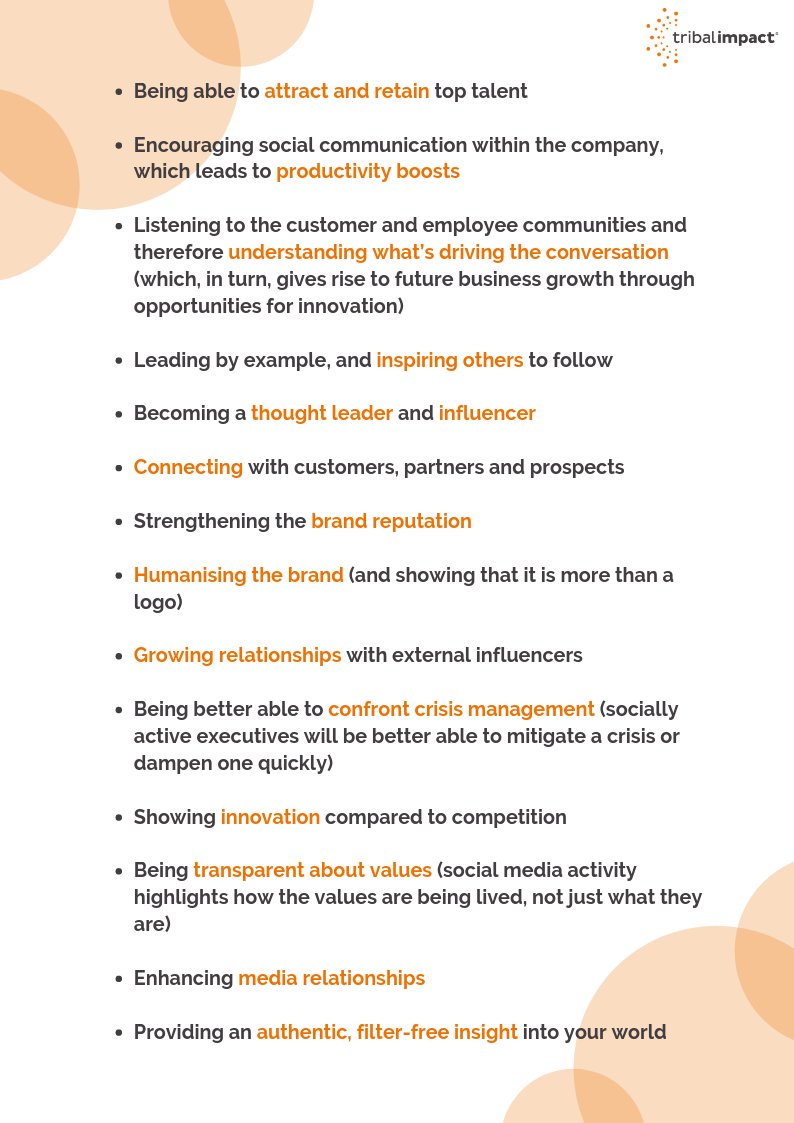
Tribal leader Sarah Goodall has written the opening chapter for 'The Social CEO: How Social Media Can Make You A Stronger Leader' by Damian Corbet. This book explores why organisations need to do more to succeed in the Social Age and why CEOs need to 'get social' to survive. It covers the hows and whys of utilising social media in order to make them stronger leaders.
So, what makes a social executive? Is there a personality type that works more effectively on social media?
Of course, it’s important for leaders to remain true to themselves when posting content, but here are some of the likely characteristics that natural digital executives might display:
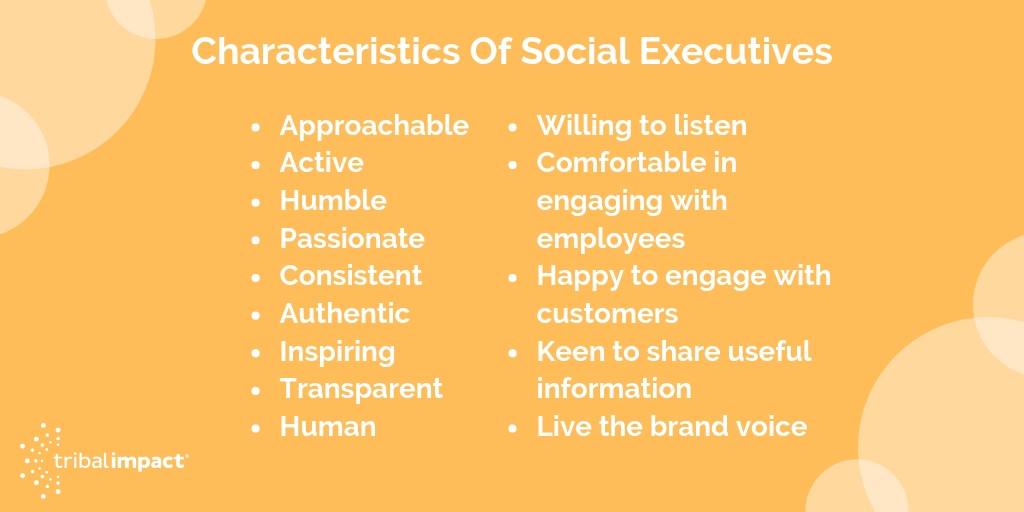
Once their social profile is up and running, these executives are going to have to find their own way with networking and relationship building. However, they are a time-poor bunch and so there’s nothing wrong in giving them a head-start by creating and launching a social leadership program.
It’s far more convincing to show people something that exists and which they can get on board with immediately, than trying to sell them a concept. In a nutshell, here are Tribal’s reasons to put together a social leadership program:
- They need clear and concise guidance (even if they have an appetite for social, they might not know where or how to start)
- It can provide tools, guidance and reverse mentoring
- It can help them to maximise benefits from the time they spend on social, as well as keeping them focused on the right activities
- It provides support when they are creating a professional first impression on their digital channels
- It can help them learn when (and when not to be) social
Once their social profile is up and running, these executives are going to have to find their own way with networking and relationship building. However, they are a time-poor bunch and so there’s nothing wrong in giving them a head-start by creating and launching a social leadership program.
It’s far more convincing to show people something that exists and which they can get on board with immediately, than trying to sell them a concept. In a nutshell, here are Tribal’s reasons to put together a social leadership program:
- They need clear and concise guidance (even if they have an appetite for social, they might not know where or how to start)
- It can provide tools, guidance and reverse mentoring
- It can help them to maximise benefit from the time they spend on social, as well as keeping them focused on the right activities
- It provides support when they are creating a professional first impression on their digital channels
- It can help them learn when (and when not to be) social
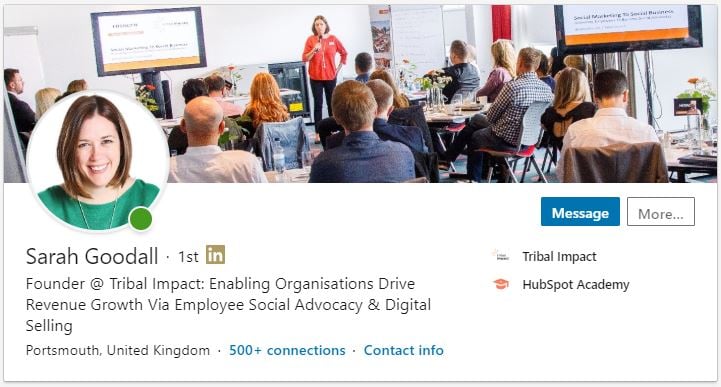
LinkedIn has seen huge growth over the past few years LinkedIn the platform is the place to be to share ideas, network locally and globally, develop your own brand and benefit from the opportunities it is driving, both personally and professionally.
Optimising your profile is essential to maximise all those benefits - here are our top tips on how you can go about that:
Banner
Your background photo appears behind your profile photo. Upload an image that represents you, your role or industry.
Profile Photo
Add a professional photo of your face. Fill 60% of the frame with your face and avoid edited photos, busy backgrounds and unrecognisable images
Headline
Replace your job title with a keyword optimised statement that summarises what you do, who you help and how you do it.
Activities & Articles
If you share, engage and/or write content on LinkedIn you will see this box appear.
Experience
Expand your headline. Write in the first person and communicate your passion.
Licenses & Certifications
Certifications are a great way to showcase your knowledge and professional achievements. Add them here.
Recommendations
Add at least 2 from past or current connections to add credibility.
Contact
Update your email to a professional one. Customise your public profile URL to remove the random numbers at the end. If on Twitter, secure a similar URL to your Twitter handle.
About
Expand on your headline. Write in the first person and communicate your passion for the work you do. Humanise the story of you. Use keywords throughout so you are searchable.
Media
Adding media can embellish your profile and direct your readers to learn more. Include case studies, videos, interviews, articles you’ve been featured in, public presentations you’ve delivered.
Education
Expand on your education. Write about projects you’ve done and remember to include keywords.
Skills & Endorsements
Review your skills – remove the ones you don’t want and add the ones you do want. Ask your colleagues to boost your endorsements.
Accomplishments
Detail out your awards, languages, professional bodies and publications here.
We offer a service to help get leaders active on social media. Our Expert Social Kick Start Program helps busy experts and leaders create their social footprint, find and connect with influential peers and build their reputation from the ground up, starting with LinkedIn and Twitter profile optimisation.
The program is ideal for leaders who need to build the professional profile quickly and professionally and want to establish their credibility online as an expert. For more information on this service, check out the Social Kick Start page.
A great way of honing your social skills is to find examples of those doing it already. Here’s our top 5 social leaders:
CTO of HubSpot – Dharmesh Shah
Tech geek; experienced blogger; admits his lack of social skills; made the transition because he values feedback for development purposes and connection with customers.
Most active on Twitter; posts a real mix of fun and serious; personal and business content.

CEO of Southwest Airlines – Gary Kelly
Hugely successful Chairman and CEO, credited with guiding Southwest Airlines to become the largest civilian carrier.
Uses Twitter to focus on his employees (nearly every post mentions them along with his bio); authenticity, values and personality comes through strongly in his feed.

CEO of American Family Mutual – Jack Salzwedel
Chairman and CEO of American Family Mutual following a career spent entirely in the insurance industry; has presided over much growth, both financially and from a community perspective.
Regularly posts on LinkedIn and Twitter; mix of brand promo and his own passions, sport and good causes; proves that even leaders in heavily regulated industries can be social.
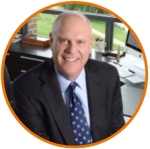
CEO of Teenage Cancer Trust – Kate Collins
With a history of fundraising roles in the cancer charity space, Kate has worked her way up to CEO from grass roots levels at Teenage Cancer Trust.
Promotes and amplifies the work of her charity. Charities can use social to raise awareness of the causes they represent; highlighting stories that matter most to them to attract volunteers and differentiate themselves from other charities.

In summary, becoming a socially engaged business is no longer a ‘nice to have’, it’s a ‘must do’. Our digital era is progressing at a rapid rate.
This presents huge opportunity for businesses, but it also opens the door to a much busier playing field.
According to Daniel Priestley in his book, Entrepreneur Revolution, “today’s teenager can sit in their bedroom and have access to more tools for building a global enterprise than Coco-Cola did when they grew internationally.”
This means that even the top businesses need to watch and learn from the changes being made by online collaboration. According to LinkedIn, 75% of B2B buyers use social media to support their purchase decisions.
According to Citrix, 50% of today’s workforce consider themselves to be digital natives and that figure is expected to rise to 75% by 2025. As arbiters of social engagement, these digital natives have expectations in terms of the companies in which they work and the world in which they live.
Any company without a social footprint will risk dropping out of the competitive market. Corporate culture has always been a differentiator for those who work within it. Now, the way you run your company could affect everyone from employees to customers and prospects too.

